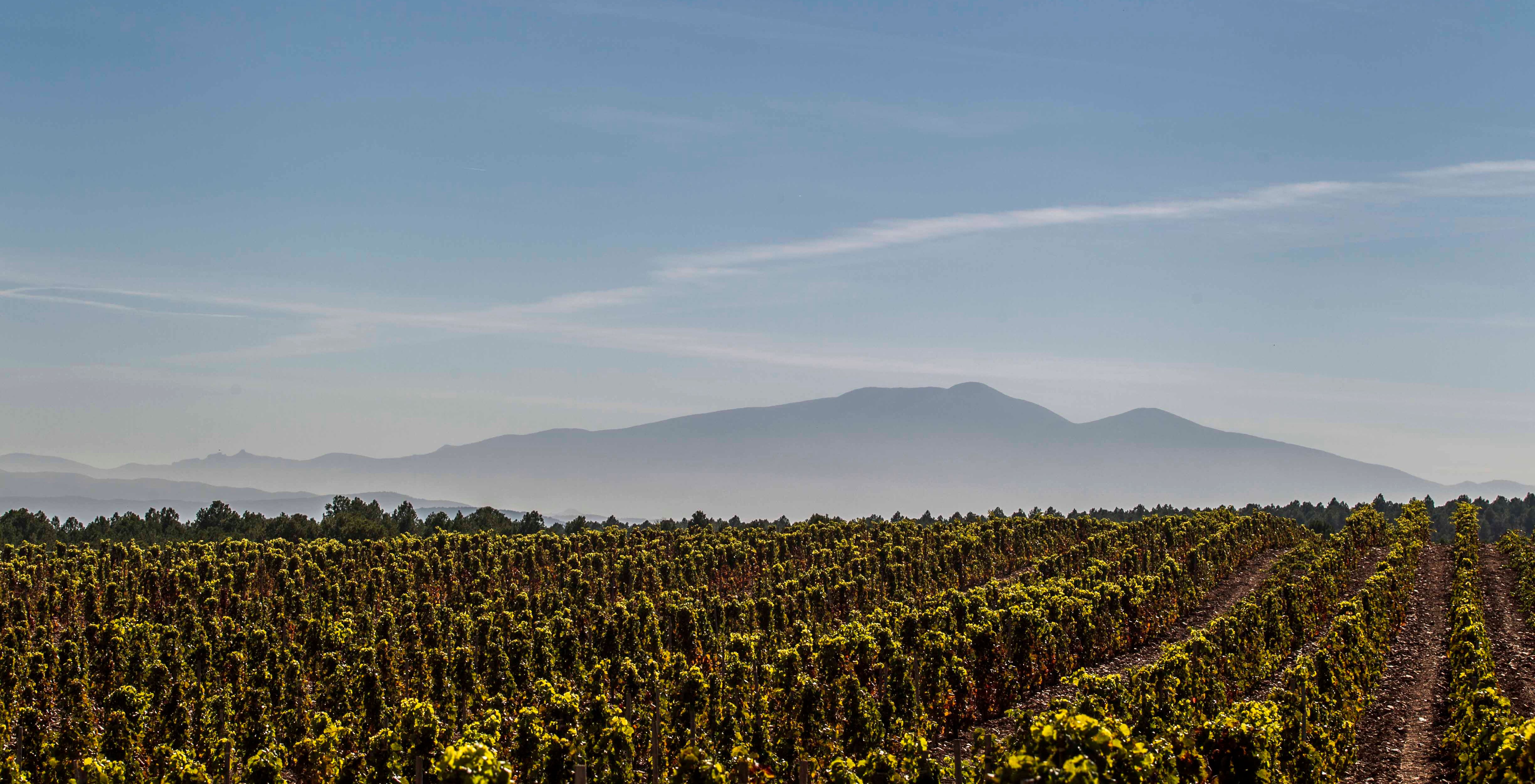We’re moving on to the second part of our deep dive into the often-overlooked diversity of Rioja. In part one, we detailed the fascinating picture of Rioja’s biggest zone, Rioja Alta. In the opening paragraphs we started by pointing out that Rioja, despite being one of the world’s most recognisable wine regions, still feels underrated for the incredible depth of terroir, styles and exciting winemakers throughout its “100kms of Diversity”.
Of the three zones of Rioja – namely Alta, Alavesa and Oriental – it can be argued that the eastern zone of Rioja Oriental is clearly the most underappreciated of the set. There are maybe historical reasons for this, but the more you delve into the soils, vines, rivers, valleys, mountains and producers the picture changes rapidly to showcase one of the most exciting areas of Spain, let alone Rioja.
Where Is Rioja Oriental?
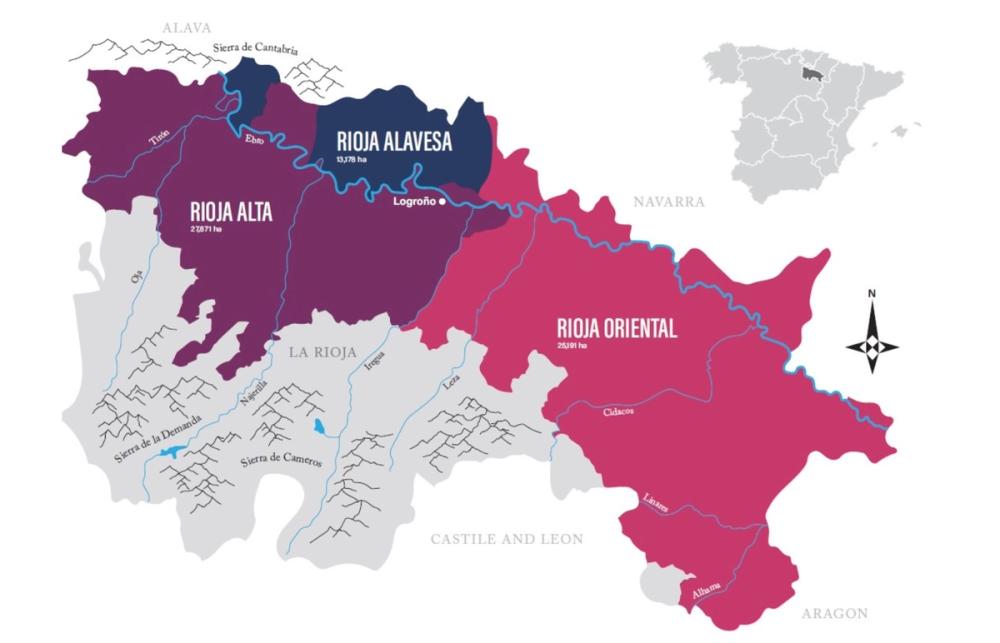
To fully understand the wines of Rioja you need to know what the Oriental region is all about
Rioja Oriental will still be recognised by some of you as Rioja Baja. The name change, official as of 2018, was pushed through by quality and brand conscious producers who claimed, quite fairly, that a region that translates as “Low Rioja” was never really going to present the image demanded by the increasingly high-class wines being made there. It was instead changed in favour of Oriental, to reflect the eastern orientation.
Rioja’s easternmost zone is situated to the east of Logroño. Most of the region is to the south of the Rio Ebro, but there are vines on the northern banks of the Ebro as it snakes its way east towards the town of Alfaro (seen as the eastern edge of Rioja) and on towards the Mediterranean Sea. It’s the second largest of the three zones, covering around 25,000 hectares of Rioja’s 66,000 in total, with land in the autonomous regions of both La Rioja and Navarre.
The main town is Alfaro, an historical town that can be traced back to Roman times and is the home of 7 wineries, including that of Oriental’s most famous champion, Álvaro Palacios whose Palacios Remondo family winery has done so much to champion Garnacha in Rioja. It’s also home to the second most populated town in La Rioja, Calahorra.
Soil formations up and down the valleys
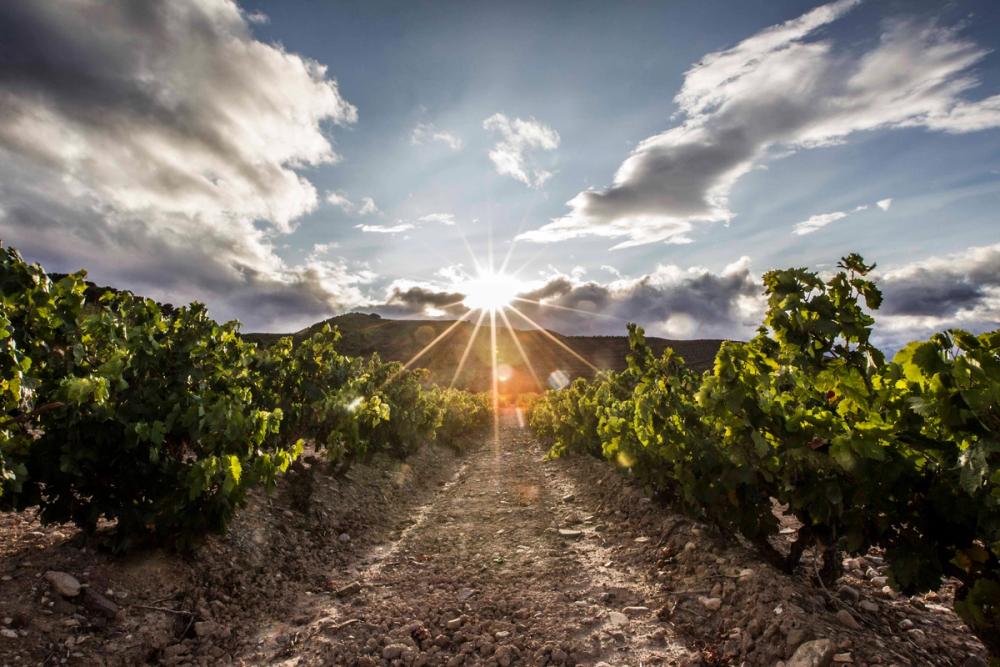
Sun breaks out across Rioja's Mount Yerga
The northern part of Oriental is formed by a widening and flattening of the Ebro Valley. This means most of the soils are sandy and stony in nature and alluvial in origin. The flat nature allows for larger plots to established, more easily worked by machines rather than the demanding hand worked labour of the higher slopes. In the past that meant large plantings of high yielding vines that supplied the local co-op’s, who dominate production, with year after year of ripe fruit to pad out Brand Rioja on both the domestic and export market.
The further south you travel from the Ebro, the landscape is dominated by steadily rising mountains and the river valleys that cut through them. After the River Iregua, on the border with Rioja Alta, comes the stunning valley of the Rio Leza and its own tributary, the Jubera. High in these rugged canyons, you’ll be fighting for space alongside hikers and bikers as much as wine enthusiasts. Further east is the Rio Cidacos, snaking past Monte Yerga itself, and the Rio Alhama.
As the slopes rise to the sides of the valleys, and into the mountains to the south, the alluvial sands and stones give way to ferrous clay. These brownish-red coloured soils, similar to those in the river valleys in Rioja Alta to the west, are very evident with a quick look at satellite photos. These are deep soils of mostly compact rock formations producing grapes for medium bodied reds and rosés with great levels of balancing acidity.
The surprising climatic changes of Rioja Oriental
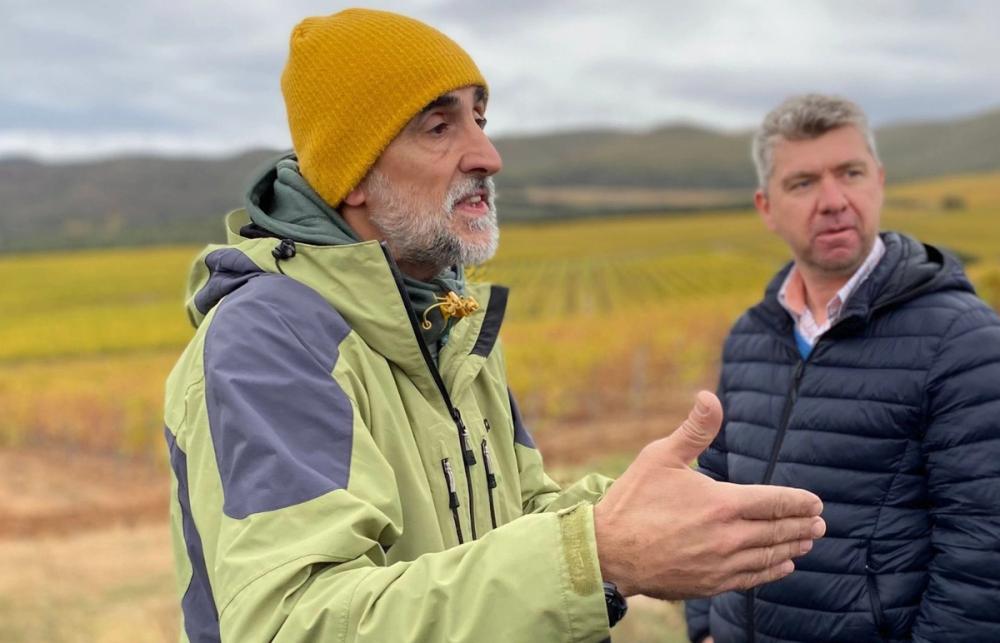
David Bastida of Ortega Ezquerro says it is picking grapes at more than 650m altitude
The climate for a large portion of the Rioja Oriental is dominated by warm and dry weather flowing up the Rio Ebro from the Mediterranean. The valley is noticeably lower, flatter and wider in the northern and central parts.
Both Alfaro in Oriental and Haro in Alta sit on the banks of the Ebro, but at just 300 metres above sea level, Alfaro is nearly 200 metres below Haro over the 100km that separate them. This gives some of the warmest and driest areas in Rioja with budburst, flowering, ripening and harvesting in the warmest parts taking place up to a month before the same occurs in the cooler areas of Alta or Alavesa.
One of the most pressing concerns caused by climate change in Rioja is for those larger producers in these warmer areas. Farmers managing plantings of trellised, younger Tempranillo vines are facing, like many regions in the world, shorter growing cycles and less plant available water. This has led to wide ranging research and development into canopy management techniques, water efficiency and water recycling systems in both the vineyard and the cellar.
This is, however, not the entire picture.
It is dramatically different towards the south, as the vineyards climb into the mountainous foothills of the Meseta. The increasingly famous Monte Yerga, one of the most iconic and landscape-dominating features, is just one of the higher altitude and cooler climate areas. The mountain reaches a peak of 1,101 metres, with most vineyards on the middle slopes. As well as the warmest areas to the north, Oriental also includes some of the coolest areas in Rioja, increasingly prized by some of Rioja’s most intrepid winemakers as cool climate Garnacha and white wines attract renewed interest.
David Bastida of Ortega Ezquerro, who sources a lot of his best grapes from Tudelilla, points out that “the majority of our vineyards are higher than 650 metres, which is higher than Haro at the other end of the DOCa in Rioja Alta. But not many people appreciate that.”
Those who know, know. The likes of La Rioja Alta, Muga, Ramón Bilbao and Roda have always valued the quality of the grapes from the Rioja Oriental, especially its Garnachas, with the likes of Tudelilla and the Monte Yerga providing raw material for many of the best pan-regional blends.
Famous commentators on Spanish wine are now offering new versions of how to map out the zones of Rioja. It’s telling that of all three official zones, it’s Oriental that has required more thought and has more suggested splits than either Alta or Alavesa.
Pepe Hidalgo, for example, splits the flatter, warmer, alluvial riverbanks of the Ebro from the higher basin of the Alhama River, the peak of Monte Yerga, the Cidacos River Valley and the Southern hillsides of Cameros Viejo.
Javier Arizcuren is based in the Monte Yerga region, in the village of Quel. He is under no doubt about the future direction for the way we see Rioja Oriental.
“From our point of view, we would like to see a split in the Oriental between the warmest and coolest parts,” says Arizcuren. “Oriental was never important politically, but has a huge range of soils, grapes and styles that are now being championed. People don’t really know about it around the world yet, but the more we can talk about Monte Yerga as opposed to simply Oriental, that will change.”
Garnacha and friends
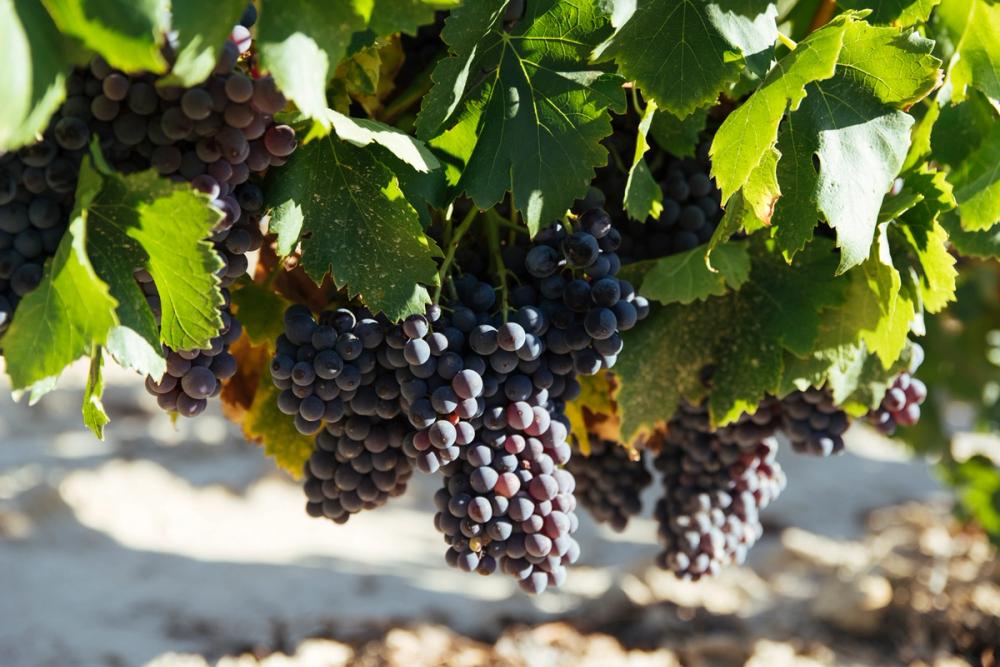
Garnacha - such an important grape variety in Rioja Oriental
The wines of Rioja, for many years, were seen as wines of style rather than wines of site. Large producers and bottlers would source fruit from all the way around the region to produce consistent portfolios with Rioja Oriental providing a great source of ripe Tempranillo, as well as Garnacha, Graciano, Mazuelo and Maturana Tinto.
As climate change continues to warm our planet, many commentators have looked at Rioja Oriental as the zone most under threat. Its generalised warm and dry vineyards are getting warmer and drier after all. But as with so many regions of the world, it’s the vines themselves that are proving Oriental’s saviour.
Even in the north and central parts, there is still a large section of old bush vines with well-developed root systems. This both controls the vigour and increases resistance to drought conditions, providing consistent quality and quantity (albeit low-yielding) each year. This is especially true for those varieties deemed as very much their own, indigenous grapes.
Garnacha is thought to have its origins in the mid Ebro Valley, between Aragon and Navarra.
“When I speak about Rioja Oriental, it’s synonymous with Garnacha,” says Carlos Mazo of Vinos En Voz Baja. “I want people to pick up a bottle of Rioja Oriental and know it’s Garnacha, in the same way as in Burgundy with Pinot Noir.”
The use of top-class Garnacha for wines of site across Oriental means that the use of the standard ageing terms becomes less applicable. Garnacha can oxidise quite easily, so the use of 225 litre barrels is not always the best idea. Instead, the term ‘Genérico’ is widely used, from the lowest to the highest qualities of wines across Oriental.
Climate change has also put new emphasis on the new plantings of more drought resistant varieties such as Graciano and Mazuelo whose excellent levels of natural acidity are proving excellent additions to retain freshness into a warming climate.
“I love Garnacha, and my 130-year-old, pre-phylloxera Garnacha vineyards at 750m produce unique and beautiful wines,” adds Arizcuren. “But I am also a champion of Mazuelo, having produced one of the first varietal Mazuelos in Rioja. We are very fortunate to have this opportunity in Oriental.”
World class white wines
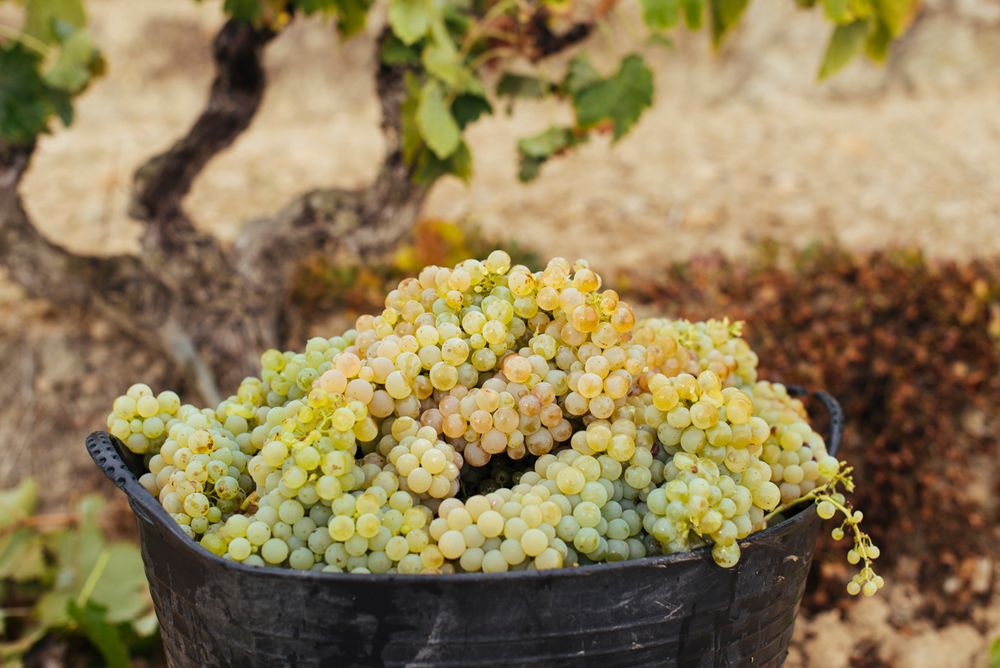
Rioja Oriental is now a great source for high quality white wines
Oriental can surprise those of you who think of it as nothing more than ripe red wines in hot and dry conditions. The southern areas of Oriental provide high altitude north-facing slopes that provide some of the coolest sites in the whole of Rioja. It’s here that you see even more white grapes planted, included Garnacha Blanca, Viura and Tempranillo Blanco.
Victor Ausejo produces some of the finest white wines in Rioja. His obsession with what Garnacha Blanca can achieve in the high slopes of Oriental, despite being surprisingly close to Logroño, are inspiring many others around him.
“I arrived in 2016 and immediately pulled up the Tempranillo that was there,” says Ausejo. “I had altitude and the surface was all sand, with ferrous clay underneath. I felt it was perfect for Garnacha Blanca and what’s happening already is great. The projects of myself and my friends are really taking off.”
It's also worth remembering that this is where Rioja shares a border with Navarra DO, a region synonymous with the production of rosé wines. Many producers, especially those close to the border, produce some of the best rosé wines in Rioja. Given the conditions these rosés tend to be short maceration rather than direct pressing, with vibrant pink colours, ripe red fruits, gastro-friendly medium bodies, and gentle warming spices.
Producers willing to go the extra mile
One of Rioja Oriental’s true visionaries is Álvaro Palacios. From his iconic family winery in Alfaro, Bodegas Palacios Remondo, Palacios returned from his legendry work in Priorat, Catalunya, and began to exude confidence in the potential of Oriental to produce world class, terroir-specific wines.
“Forty to 50 years ago, we made good wines, with good wineries, but people didn’t have the self-confidence of producers in Alta or Alavesa,” says Mazo. “Then Álvaro Palacios arrived 25 years ago and changed the mentality. Dry farmed, bush vine Grenache worked, and the likes of myself, Javier Arizcuren and many others have followed where he led.”
The 2017 introduction of Vinos de Zona is arguably more important for Oriental than for Alta and Alavesa. It’s a fabulous way to show the completely underappreciated quality that is being produced in eastern Rioja. The differences in site, climate, aspect, altitude and ethos throughout the likes of Tudelilla, Alfaro, Quel or Aldeanueva de Ebro, not to mention the continuing exploration of slopes of the Monte Yerga, mean seeing Rioja Oriental on the label in future will be a cause for keen interest for wine lovers.

David Inchaurraga of Finca Vistahermosa
As the recognition for such wines increased, as did the confidence of those producers willing to follow suit. Finca Vistahermosa manage around 163 hectares of vines from their base located at the foot of the Sierra de la Hez, in the municipality of Molinos de Ocón.
It boasts the largest reserve of old vine Garnacha in Rioja. “We used to sell grapes across Rioja to the likes of Muga and Palacios,” says owner, David Inchaurraga. “We knew this fruit was exceptional, so in 2005 we decided to begin our own winemaking story to really show off this quality.
The producers of Oriental should benefit from the new rules for Viñedos Singulares. Oriental has plenty of 35+ year old vineyard sites across a wide range of soils, slopes and aspects. These sites have mostly been in the same family for generations, and as more gain confidence to produce their own wines, like at Finca Vistahermosa, the bank of top-quality single vineyard wines will showcase Oriental even further.
Managing vineyards at altitude, like the 760m high plots at Finca Vistahermosa, is not easy work and requires an increasingly large commitment as planting increasingly spread into mountainous slopes.
“People naturally want to work near to their house,” adds Mazo. “Unfortunately, this is not Burgundy, the vineyards we are now planting are 30 minutes or more away, up into the mountains, and people are not sure they want it.”
It also means that, as with the rest of Rioja, the rules governing Vinos de Pueblo remain challenging. A producer has to have a cellar in the same village as the vineyard, and as Mazo points out, this is increasingly less common. Regardless of the use of the village name or not, the rewards for those willing to literally go those extra miles are clear for all to taste.
A visit to Rioja Oriental
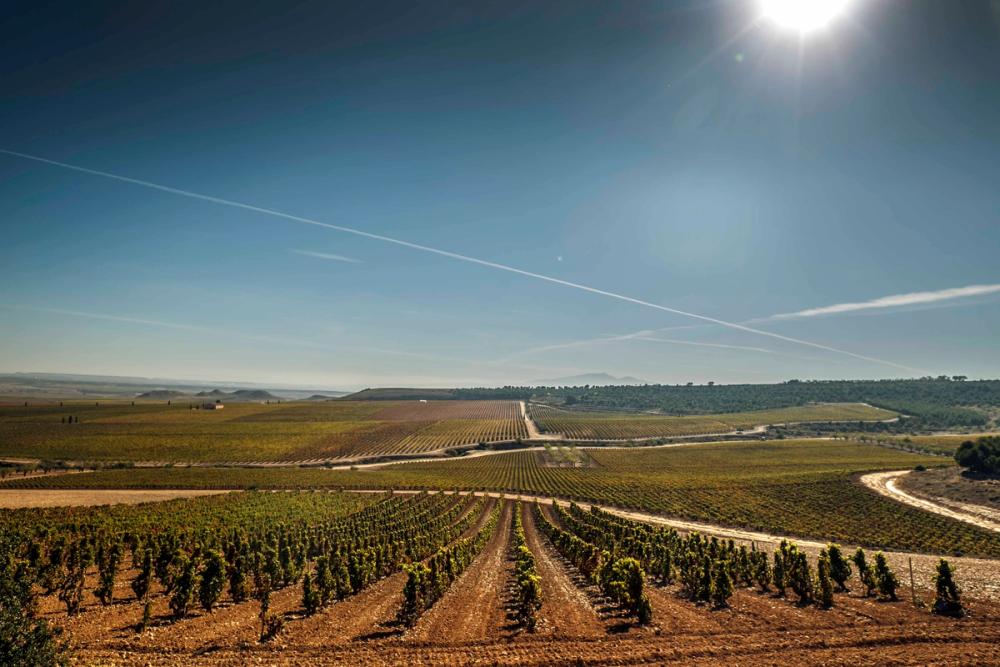
There is so much to discover and explore in Rioja Oriental
As with the previous article, I wanted to finish with what’s also on offer to those visiting the region. Pretty much anywhere in Oriental is less than an hour’s drive from Logroño meaning visits to the towns of Alfaro, Quel, Tudellia, and Calahorra are within easy reach.
Wine lovers will no doubt head for the wine and culture museum in Aldeanueva de Ebro. Foodies will love the bespoke mushroom trails or the olive oil culture museum in Prejano. Those looking to relax can hit the thermal baths in Arnedillo. Or you can simply pick up the phone to some of the fabulous producers, some mentioned in this article, who are only too pleased to show off this new world of Rioja Oriental for those who make the trip.
* For more information about the regions, wines and winemakers mentioned in this article, as well as more information on visiting Rioja Oriental, please contact the Rioja Wine UK team on Rioja@thisisphipps.com.
* The Rioja Somm’er School 2024 is now open for applications. Taking place between June 24-27, the Rioja Somm’er School will be a three-day trip to the region complete with winery visits, seminars and tastings. Eight sommeliers will have the opportunity to visit leading wineries across the region’s three zones, meet with pioneering producers and discover both traditional and newer styles of wine being produced in the region.
* UK-based sommeliers and on-trade buyers can apply for a spot on the Somm’er School here: https://survey-eu1.hsforms.com/1oMsBpLZHTeyFzOk1nNd5hAf9pul
* To learn more about Rioja and its wines, visit the Rioja Wine Academy, a fantastic online platform offering free educational courses for trade and consumers alike. There are six courses available on the platform from introductory courses right through to the Rioja Wine Diploma, which covers everything from grape varietals to styles of wine, regulations on viticulture to gastronomy and history. To register for a course, head to riojawineacademy.com.
* Mike Turner is a freelance writer, presenter, educator, judge and regular contributor for The Buyer. You can contact him at mike@pleasebringmemywine.com.
* Funded by the European Union.
